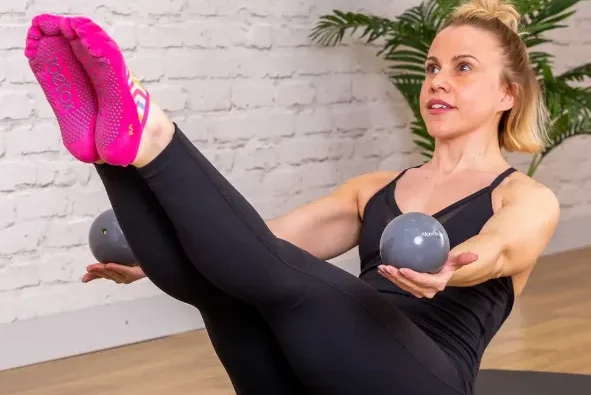
Running is one of those activities that people either love or hate. The difference often comes down to skill—those who enjoy running usually started young and built up their skills, while others struggle because the sport doesn’t naturally suit their body type. In the fitness world, this latter group often includes those who are stronger or more muscular, as running favors a different physique. But what if you could learn to run without falling into the trap of injuries that many beginner runners face?
The truth is, running doesn’t have to be painful or harmful. With the right approach, you can gradually build up your running ability while minimizing the risk of injury. The Walk/Run Program 2.0 is designed to help people of all backgrounds, even those who may not be naturally built for running, get to a point where they can run continuously for 60 minutes without issue.
How the Walk/Run Program 2.0 Came to Be
A few years ago, I created a running program that quickly became my most successful workout plan. It became the foundation for my book Run Strong, and since then, hundreds of people have used it to get into running without suffering any injuries. That’s right—despite running being an activity that has an 80% injury rate for beginners, my program has boasted a perfect track record for injury-free results.
Over time, I’ve made a few tweaks to improve it even further, which brings us to the updated Walk/Run Program 2.0. This program focuses on building up your running endurance while preventing injury by incorporating a gradual progression and paying attention to crucial details that many beginners overlook.
Start with the Basics: Getting Your Body Ready
Before you even start running, it’s essential to ensure your body is properly prepared. The first step is addressing your weight. Running creates a lot of force on your body—up to three times your body weight during each landing. So, if you’re carrying extra weight, it can put an immense amount of strain on your joints and increase the likelihood of injury.
The second part of preparation is making sure your body is functioning well mechanically. I recommend getting a Functional Movement Screen (FMS) done by someone who understands both running and body mechanics. This can help identify issues, such as limited ankle mobility, which can lead to compensations that create stress in other parts of your body. For example, if your ankle mobility is poor, your body may overcompensate, leading to excess strain on your knees or lower back during each run.
The Walk/Run Program Structure
The key to building endurance without overloading your body is to gradually increase the time you spend running and walking. The Walk/Run Program 2.0 starts with alternating between walking and jogging in short intervals, progressively increasing your jogging time each week.
Week 1: Jog 1 minute/Walk 4 minutes (repeat 6 times)
Week 2: Jog 2 minutes/Walk 3 minutes (repeat 6 times)
Week 3: Jog 3 minutes/Walk 2 minutes (repeat 6 times)
Week 4: Jog 4 minutes/Walk 1 minute (repeat 6 times)
As you progress, you’ll gradually increase the jogging intervals and extend the total workout time. By Week 5, the intervals go up to 6 minutes of jogging and 4 minutes of walking, and by Week 10, you’ll be jogging for 14 minutes and walking for 1 minute.
In Week 13, the final goal is to run continuously for 60 minutes. This gradual increase ensures your body can adapt to the increased intensity while minimizing the risk of injury.
How Hard Should You Be Running?
It’s essential to understand how hard you should be pushing yourself. Many beginners make the mistake of trying to run too fast, which often leads to burnout or injury. Instead, use the 180-minus-age heart rate method to determine your target intensity. For example, if you’re 40 years old, your maximum aerobic heart rate would be 140 beats per minute. When you’re running, make sure you stay within this heart rate zone, even if it feels like you’re running slower than you’d like.
This method is designed to build your aerobic capacity safely and efficiently. Don’t worry if you feel like you’re running too slowly at first. That’s normal, and it’s actually a sign that your aerobic system is underdeveloped and needs time to build.
Preventing Common Running Injuries
The majority of running injuries—such as shin splints, Achilles tendonitis, and IT band syndrome—can be prevented with the right precautions. A major component of injury prevention is strengthening the calves. Eccentric calf exercises, such as lowering your heel slowly after rising onto your toes, help build strength in the lower legs, which is essential for running.
In addition, avoid making sudden jumps in your training volume. The Walk/Run Program 2.0 helps you avoid this by gradually increasing your running time, allowing your body plenty of time to adapt.
The Bottom Line: Running for Life
The Walk/Run Program 2.0 is designed to help you safely and effectively build up to running for 60 minutes, no matter your starting point. By following the plan, sticking to your target heart rate, and paying attention to key details like mobility and lower limb strength, you can avoid injury and enjoy running as a sustainable part of your fitness routine.
The goal is not just to run for an hour but to build a lasting running habit that you can maintain for years to come. Whether you’re new to running or returning after a break, this program provides a safe and effective path to increasing your endurance and becoming a stronger, healthier runner.












